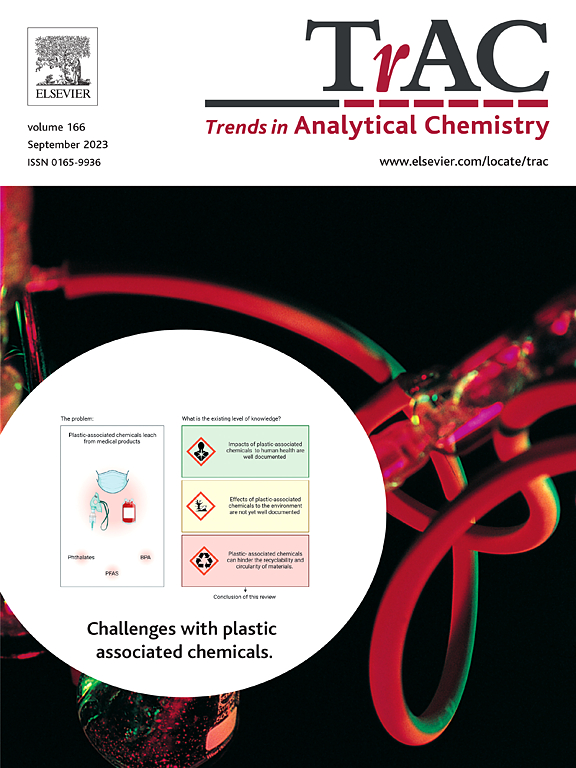水生环境中微塑料 (MP) 的微生物定殖:微塑料的毒性、微生物降解潜力及其相互作用
IF 11.8
1区 化学
Q1 CHEMISTRY, ANALYTICAL
引用次数: 0
摘要
微生物塑料生物降解是减少环境中累积的塑料废物的一种可持续方法,但目前仍缺乏微塑料(MP)与微生物之间的具体相互作用。本研究系统回顾了微塑料对微生物细胞功能和群落结构的影响,以及微生物对微塑料在水生环境中归宿的影响。研究还详细探讨了它们在各种水生生态系统中的独特相互作用。虽然 MP 通常对大多数微生物都有毒性,但由于微生物的趋化性和更容易获得营养,它们也能使病原体和碳氢化合物降解菌等特定微生物群体富集起来。另一方面,微生物能够分泌胞外酶,将 MPs 生物降解为低聚物、二聚物和单体,从而改变 MPs 的密度、结晶度和表面粗糙度,进而影响 MP 在水生环境中的分布模式。此外,我们还讨论了当前研究的局限性和未来展望,为进一步研究提供了全面的基础概述。本文章由计算机程序翻译,如有差异,请以英文原文为准。
Microbial colonization of microplastic (MP) in aquatic environments: MP toxicity, microbial degradation potential and their interactions
Microbial plastic biodegradation is one sustainable approach in reducing the accumulated plastic wastes in the environments, but specific interactions between microplastic (MP) and microorganism are still lacking. This study systematically reviews the influences of MP on cell functions and community structures of microorganisms, as well as the microbial impacts on the fate of MP within aquatic environments. Detailed examinations of their distinctive interactions within various aquatic ecosystems are also presented. While MP are commonly toxic to most microorganisms, they could also enrich specific microbial groups such as pathogens and hydrocarbon-degrading bacteria due to the chemotaxis and easier nutrition access of microorganisms. On the other hand, microorganisms are capable of secreting extracellular enzymes that biodegrade MPs into oligomers, dimers, and monomers, hereby changing the density, crystallinity, and surface roughness of MPs, consequently influencing the MP distribution patterns in aquatic environments. Additionally, we discuss current study limitations and future prospects, providing a comprehensive foundational overview for further investigations.
求助全文
通过发布文献求助,成功后即可免费获取论文全文。
去求助
来源期刊

Trends in Analytical Chemistry
化学-分析化学
CiteScore
20.00
自引率
4.60%
发文量
257
审稿时长
3.4 months
期刊介绍:
TrAC publishes succinct and critical overviews of recent advancements in analytical chemistry, designed to assist analytical chemists and other users of analytical techniques. These reviews offer excellent, up-to-date, and timely coverage of various topics within analytical chemistry. Encompassing areas such as analytical instrumentation, biomedical analysis, biomolecular analysis, biosensors, chemical analysis, chemometrics, clinical chemistry, drug discovery, environmental analysis and monitoring, food analysis, forensic science, laboratory automation, materials science, metabolomics, pesticide-residue analysis, pharmaceutical analysis, proteomics, surface science, and water analysis and monitoring, these critical reviews provide comprehensive insights for practitioners in the field.
 求助内容:
求助内容: 应助结果提醒方式:
应助结果提醒方式:


